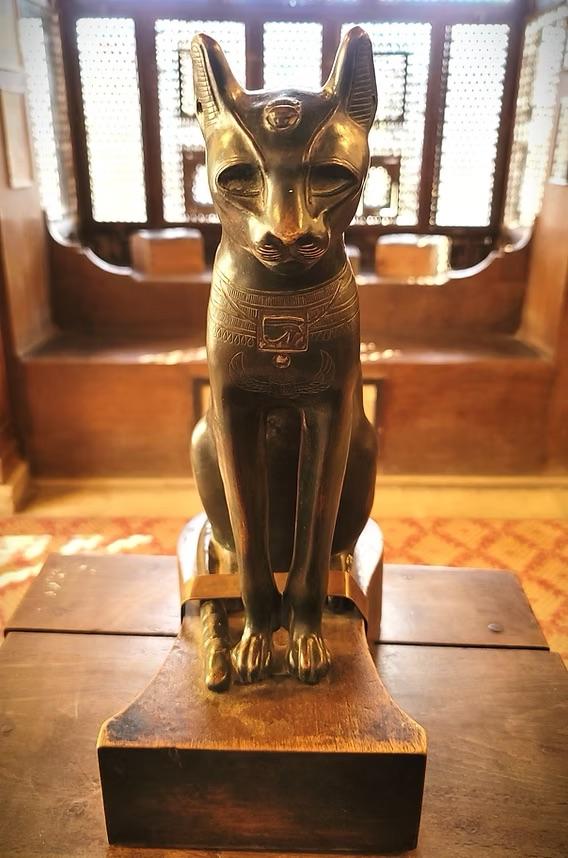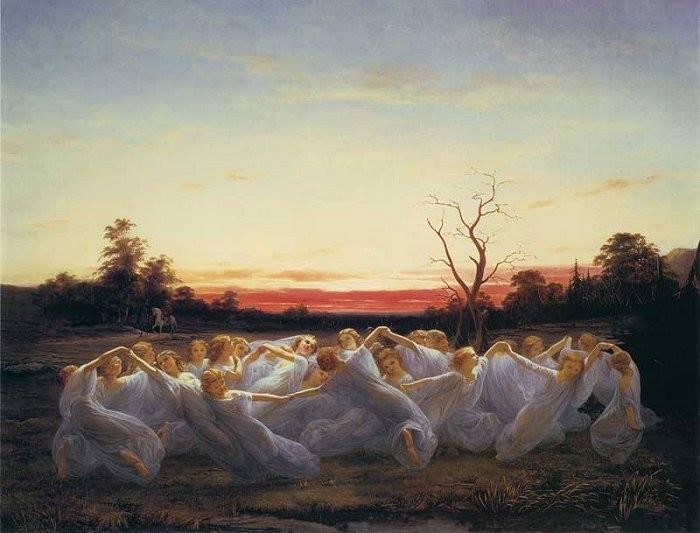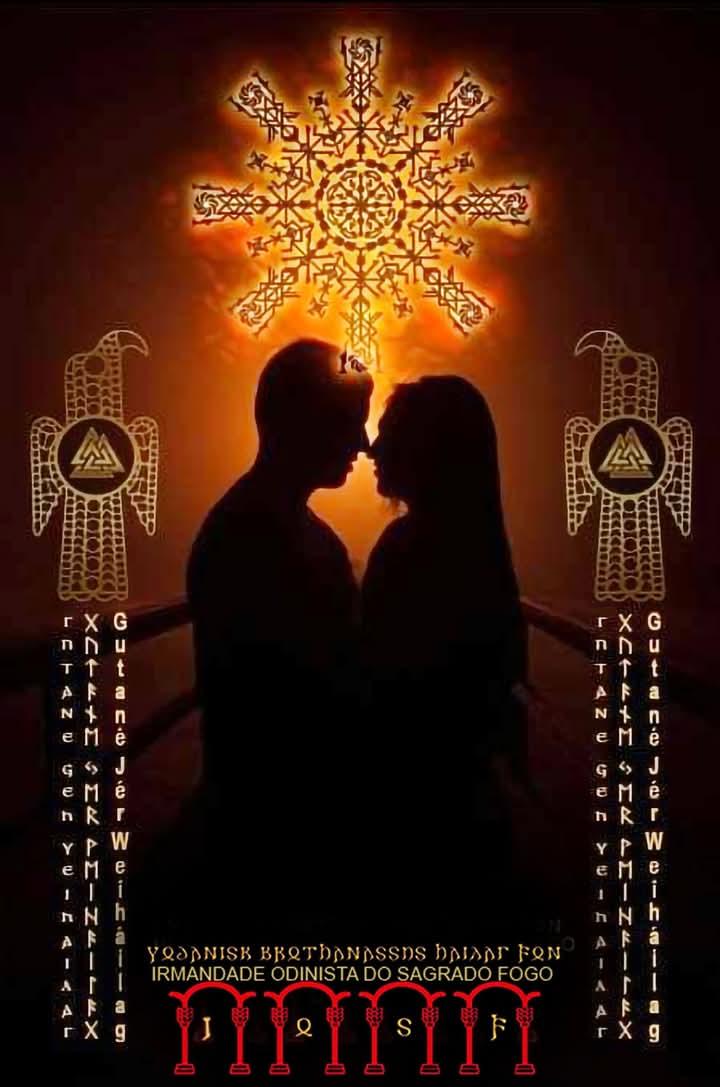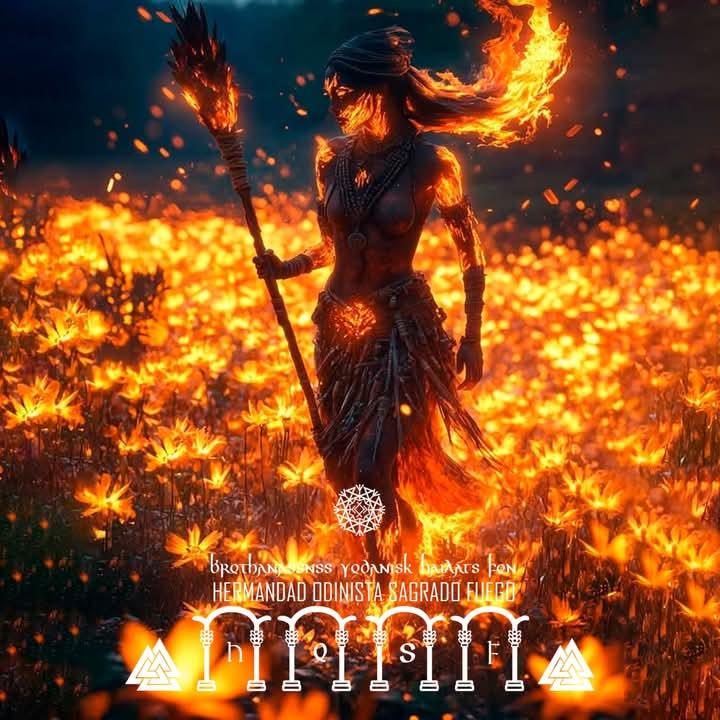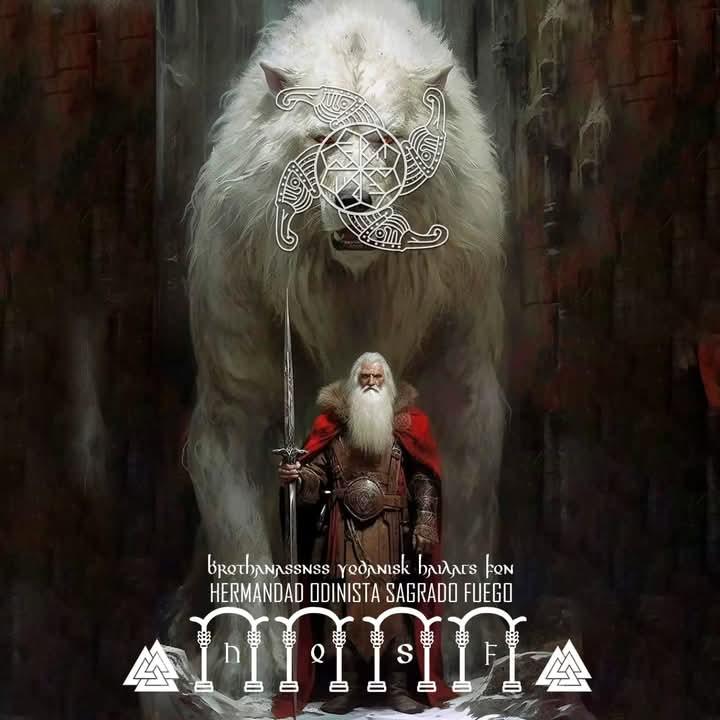Gullveig Chant.
Witch Goddess Gullveig
Master of the Northern Witches
Expert in the art of Seidh
Lady of the transformations
You caused a great war
You, trice burnt
Seer, Vitki woman
Trice re-born
You are the radiant gold
Some call you the caldron Witch
You bring the singed broom
Great Vanir Witch
The Lynx follows you
The white crow guides you
The owl gives you advice
The spider protects you
The echo from the witches in the mist
Calls you the first witch
You are the first, not the last
You inhabit in each of them
There are no secrets for you
Master of the fire
You are both,
The creator and the destroyer
From the powerful gold magic
Moon Blood ablaze
By the primordial fire
The heart is consumed
Invocations are cast
In the dark of the moon you arrive
Amidst the hidden balefire
Your witches praise you
At the Walpurgis feast
They dance in your honour.
As it was in the past,
As it is today
Illuminate and cause madness
Protect, teach and nourish us
Witch of the perennial fables
Hidden within the mist and masks
Impostors Pseudo Witches
In the wolf era called you
The one of the thousand names
But you never answered them
You, radiant Gullveig
An alliance is established
Powerful energy is emanated
Conjures will fall beside you
One who doesn’t know your ways will loose oneself
Among mirages and reflexes
From death, madness and love Goddess of the mortal spell
We make a toast in your honour
Protector of this brotherhood
Burn! purifying fire.
You, the eternal Goddess witch
In the rituals of moon and blood
Powerful soothsaying chants
Wheel of white masks
Curses will be returned
Guardian of other times
Odinist women in Midgard
Reborn, to your call they will respond
And your name will never be forgotten
The Hawk wings will guide
The flames of the fire will untie
May the great nation of the Visigoth Eagle
Be ready for battle under your fire, just waken now.
© Hoen Falker.
https://www.odins-gift.com/poth/3multi/cantodegullveig.htmGullveig Chant.
Witch Goddess Gullveig
Master of the Northern Witches
Expert in the art of Seidh
Lady of the transformations
You caused a great war
You, trice burnt
Seer, Vitki woman
Trice re-born
You are the radiant gold
Some call you the caldron Witch
You bring the singed broom
Great Vanir Witch
The Lynx follows you
The white crow guides you
The owl gives you advice
The spider protects you
The echo from the witches in the mist
Calls you the first witch
You are the first, not the last
You inhabit in each of them
There are no secrets for you
Master of the fire
You are both,
The creator and the destroyer
From the powerful gold magic
Moon Blood ablaze
By the primordial fire
The heart is consumed
Invocations are cast
In the dark of the moon you arrive
Amidst the hidden balefire
Your witches praise you
At the Walpurgis feast
They dance in your honour.
As it was in the past,
As it is today
Illuminate and cause madness
Protect, teach and nourish us
Witch of the perennial fables
Hidden within the mist and masks
Impostors Pseudo Witches
In the wolf era called you
The one of the thousand names
But you never answered them
You, radiant Gullveig
An alliance is established
Powerful energy is emanated
Conjures will fall beside you
One who doesn’t know your ways will loose oneself
Among mirages and reflexes
From death, madness and love Goddess of the mortal spell
We make a toast in your honour
Protector of this brotherhood
Burn! purifying fire.
You, the eternal Goddess witch
In the rituals of moon and blood
Powerful soothsaying chants
Wheel of white masks
Curses will be returned
Guardian of other times
Odinist women in Midgard
Reborn, to your call they will respond
And your name will never be forgotten
The Hawk wings will guide
The flames of the fire will untie
May the great nation of the Visigoth Eagle
Be ready for battle under your fire, just waken now.
© Hoen Falker.
https://www.odins-gift.com/poth/3multi/cantodegullveig.htm






